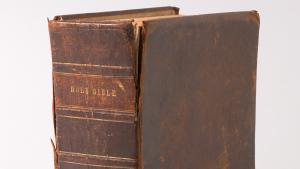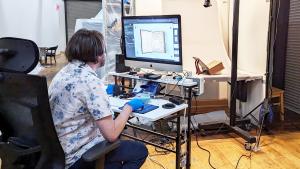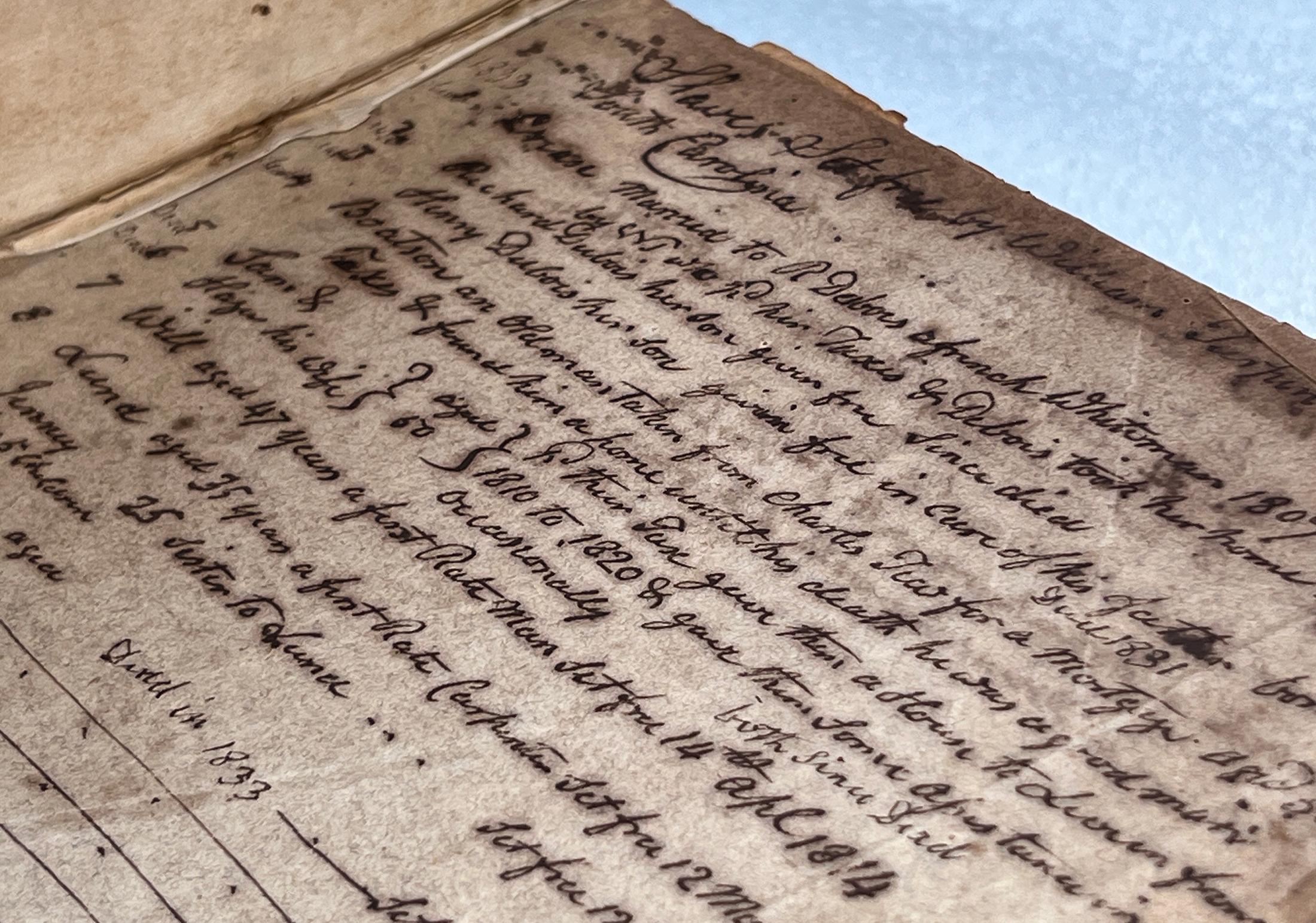
Rare object reveals a story of enslavement and emancipation in Pre-Civil War Charleston.
*** The Turpin Bible will go on display in the new exhibition, The Story of Us, opening Sat., Nov. 4. ***
The South Carolina State Museum recently acquired a 1815 Bible owned by William Turpin, a Charleston merchant and enslaver turned abolitionist. The most remarkable aspect of this rare piece lies within its front cover: a handwritten list of dozens of enslaved people he freed, illustrating the activities of a small, yet vibrant abolitionist community in South Carolina.
Between 1789 and 1799, Turpin, a Rhode Island native whose family moved to South Carolina before the Revolution, and Thomas Wadsworth, a former state senator, acquired nearly two dozen slaves in the South Carolina upcountry as part of a business partnership. The two men may have purchased these persons for labor or accepted them as payment for customers’ debts, but soon their actions became part of a concerted effort to free those in bondage.
Before his death in 1799, Wadsworth would free twenty-one bondspeople living in Newberry, Abbeville, and Laurens counties, claiming he was “induced from notion of humanity to set free and emancipate all the negro slaves that have been intrusted [sic]...” to his care. Additionally, he granted each family fifty acres of land, a cow, and farming tools–and placed them under the guardianship of the Bush River Society of Friends, a community of Quakers who opposed slavery.
Turpin was equally committed to the abolitionist cause, freeing thirty-one people between 1807 and 1826 and then writing their names in this Bible, which is now in the collection of the State Museum. All but one of those listed remained free in either in South Carolina or New Rochelle, New York, a station on the Underground Railroad. However, one individual named Boston, freed by Turpin in May 1820, was kidnapped from his home by slave catchers seven years after gaining his freedom. His guardian, John Glen, purchased ads offering a reward for the “restoration of said fellow to his liberty.” Boston’s fate is unknown; Turpin records his death in 1833 but makes no assertion as to whether he died free.
Turpin’s bible not only names and offers details about the lives of the enslaved, but it also deepens our understanding of how ideas about slavery, emancipation and freedom developed in South Carolina in the early and mid-18th century. Their names, recorded by Turpin’s hand, are powerful ways for us to connect with the past. It gives names and power to those recorded, helping us better understand their lives and struggles.

Collection Spotlight: William Turpin Bible (1815)
Take a closer look at this recently acquired object in the museum's collection: a Bible owned by William Turpin, a Charleston merchant and enslaver turned abolitionist.
Turpin Bible Q & A
The State Museum's Curator of African American History and Culture recently sat down with Dr. David Dangerfield from USC Salkehatchie to discuss the significance of one of the museum's recent acquisitions: a rare Bible owned by William Turpin, a white South Carolina merchant and enslaver turned abolitionist.

























